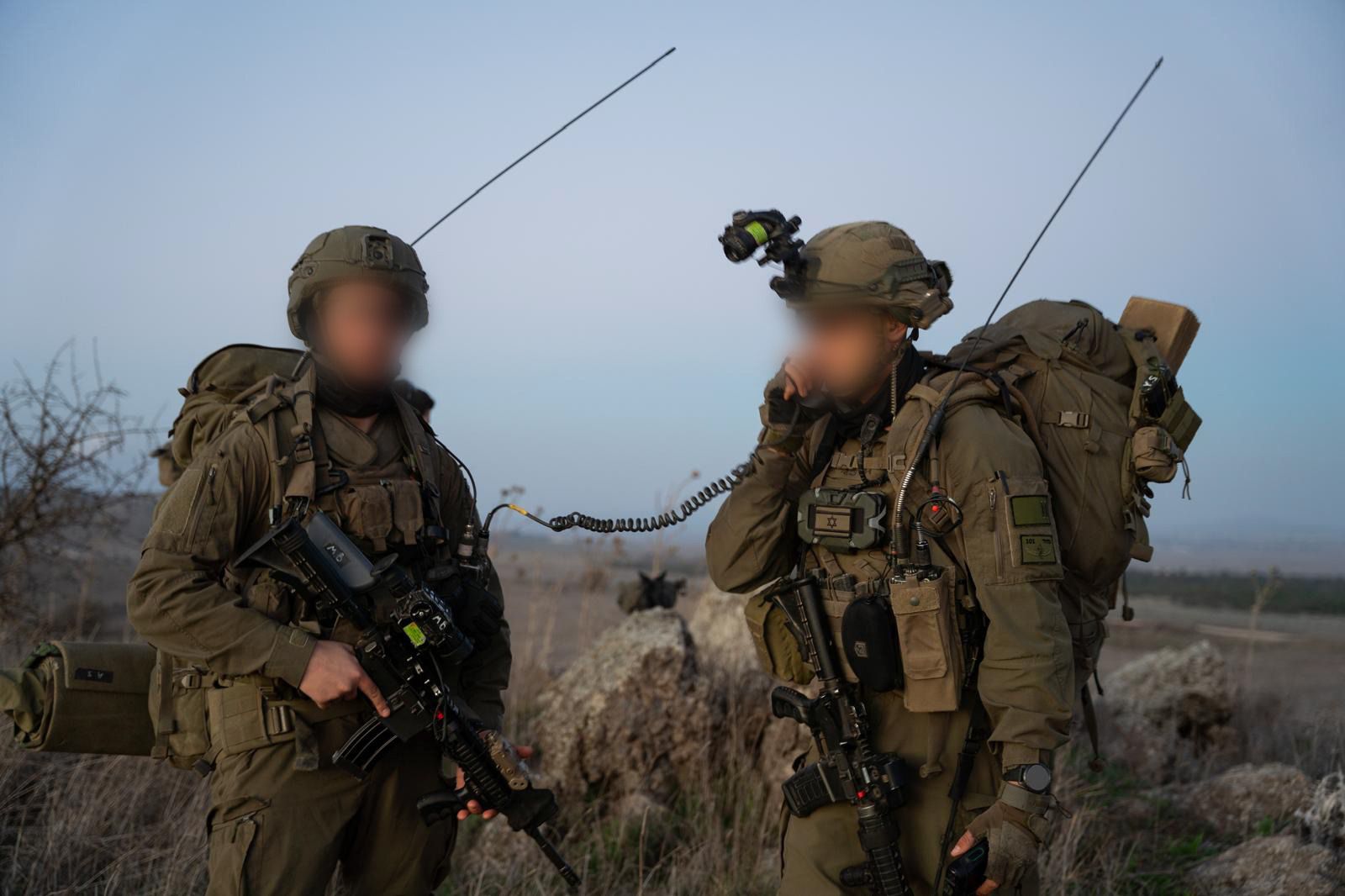
Following the Assad regime’s collapse, the IDF assumed control of the Syrian side of Mount Hermon indefinitely.
By Anna Epshtein, TPS
We were instructed to put on our bulletproof vests and helmets as the military jeep passed over an increasingly bumpy road.
We had already passed the furthest point in the Golan Heights accessible to Israeli civilians. “Welcome to Syria,” our driver says as we pass two poles with red barrels on them.
There are no signs or fences indicating a border. The area we are entering had been designated a buffer zone in 1974 as part of the ceasefire agreement that ended the Yom Kippur War.
A half-century later, Bashar Assad’s government collapsed in the face of advancing Turkish-backed Islamists.
Israel quickly seized control of the 235 sq kilometer demilitarized zone to prevent Syrian rebels from advancing towards the Israeli border.
Since then, the Israeli military has built several outposts in this buffer zone. Our driver, Erez, brings us to one called “The Wind’s Fortress.”
The choice of name quickly became obvious — the moment we step out of the jeep, a strong wind nearly knocks us down.
“You are lucky – we call today’s weather good,” smiles S., the battalion commander leading a tour for journalists. “You don’t want to know what January looked like here.”
The elevation is 2,332 meters and the temperature, I’m told, doesn’t rise above 15 Celsius. There is still a lot of snow around, although it is gradually melting in the spring sun.
S.’s battalion consists of reservists – infantry and paratroopers who have been manning The Wind’s Fortress for about one month.
Most of them have been on reserve duty since October 7, mainly on the border with Lebanon, and then inside it.
Asked how many days he has been in the army, S. — who owns a law firm in his civilian life — smiles again, “You need to ask my wife. I’ve lost the count.”
The reservists are exhausted after a year and a half of fighting and the necessity to combine it with their civilian jobs and family life, but the turnout rate in the battalion still stands at around 80 percent.
“We are here for each other,” S. shrugs. “Everyone knows he can’t leave friends behind.”
S. won’t be home for Passover, which is a family-oriented holiday. The commander will be with his soldiers here for the traditional Passover dinner on Saturday night.
Preparations for the holiday are already underway. A few hours earlier, army rabbis arrived to make sure the outpost was kosher for Passover and that soldiers had matzah, grape juice and other items to celebrate Egyptian exodus.
Passover aside, the soldiers sense they are part of something making history.
“I got goosebumps here when I first arrived here,” soldier B. says. “How could I possibly imagine I will ever step on the Syrian land?!”
S. remarks, “Since October 7, too many things happened that we couldn’t possible imagine. Us being here is one of them.”
Erez tells me that children in the nearby Syrian village of Kuneitra smile to them and wave hands, and that civilians are willing to chat.
“It’s not like in Gaza,” he says. “Children are still okay here. They were not brought up to hate the Jews.”
In the kitchen, everything looks sparkling clean. The new dishes that were brought for the Passover will serve the soldiers for the rest of the year, one of the rabbis tells me.
Does this mean that The Wind’s Fortress is here to stay?
“I don’t think we should ever leave,” says Erez. “We need to keep the Israeli villages of the Golan Heights safe from another October 7.”
The post ‘Welcome to Syria’: Soldiers gear up for Passover with ‘goosebumps’ and grape juice appeared first on World Israel News.